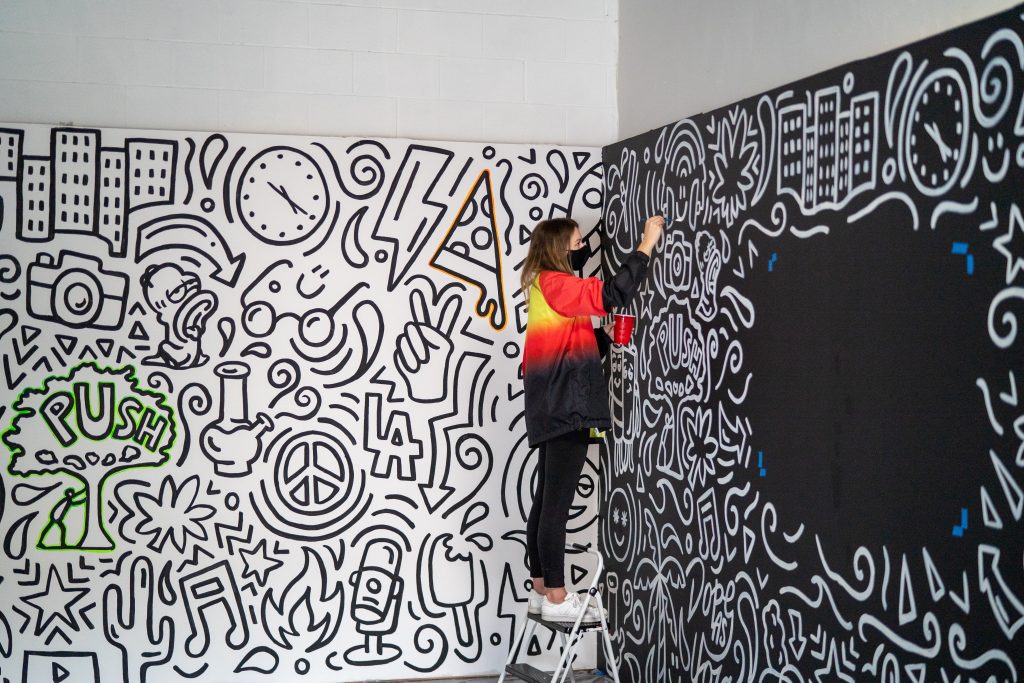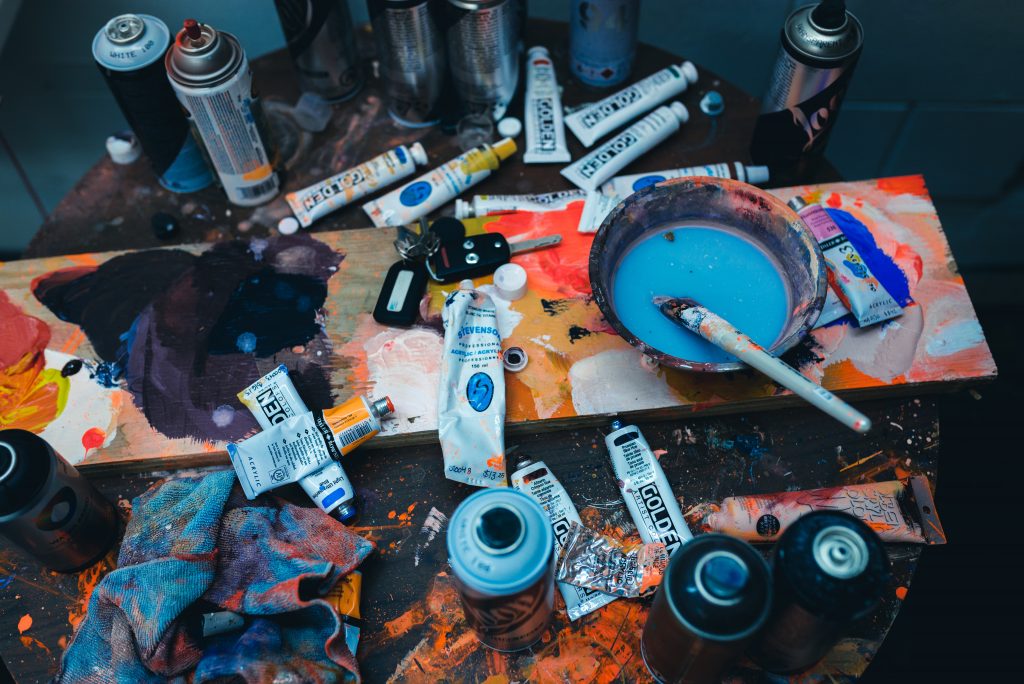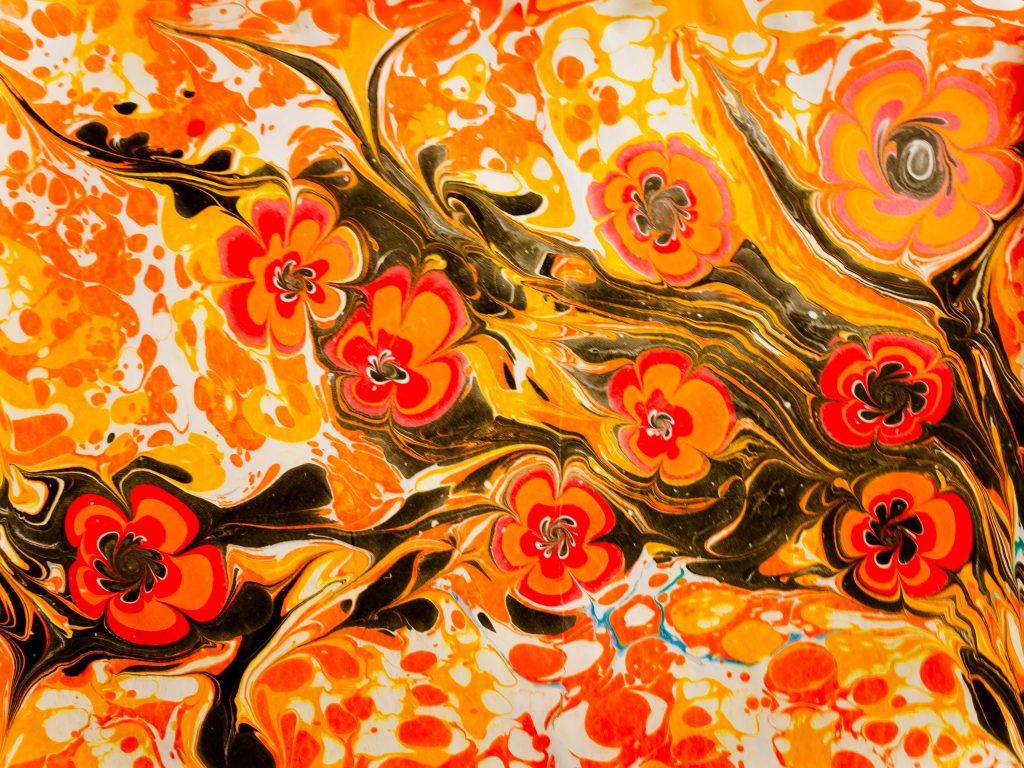Murals can add a lot of character and personality to a room, and they are a great way to show your creative side. If you have ever wanted to learn how to paint murals, you are in luck! In this article, we will teach you how to paint murals and everything you need to know in order to create beautiful murals that will wow your friends and family.
What Is A Mural?

A mural is a painting or other work of art made directly on a wall, in contrast to paintings hung on a wall. Murals are often large works, covering an entire wall or a prominent section of it. Outdoor murals are usually painted on the side of a building and can be seen from the street.
Painting murals has been popular throughout history; examples can be found in ancient Egyptian tombs and in the ruins of Pompeii. The word “mural” comes from the Latin murus, meaning “wall.” The first recorded use of the word “mural” in English is from 1606 when it was used to describe a painting on a wall.
Murals can be educational, tell a story, or convey a message. They can also be purely decorative, and designed to add color and interest to a space. Many murals are detail-oriented, with intricate patterns and designs. Others are more simplistic, with bold colors and shapes. Whatever their style, murals add personality and character to a space.
How To Paint Murals
Although some people may be born with a natural talent for painting, everyone has the ability to learn how to paint murals. Here are a few easy steps to get started:
1. Find your inspiration. Whether it’s a particular scene from nature or a piece of artwork that you love, it’s important to have a clearly defined vision before you begin painting.
2. Sketch your design. This doesn’t need to be anything fancy – a simple outline of the mural will do. But having a basic plan will help you stay organized and prevent mistakes later on.
3. Choose your colors. When picking paint colors, it’s important to consider the overall mood that you’re trying to create. For example, warm colors like red and orange can create an energetic atmosphere, while cool colors like blue and green are more calming.
4. Paint in layers. Start with the background first, then move on to the mid-ground, and finally add in the details in the foreground. This will give your mural depth and dimensionality.
5. Let your creativity flow! The best part about painting murals is that there are no rules – so let your imagination run wild!
What Type Of Paint Should I Use To Paint A Mural?
When it comes to painting murals, there are a few different types of paint that can be used. Examples are acrylic paint, spray paint, and latex paint. Water-based paint is a popular option as it is relatively inexpensive and easy to clean up.
However, it can be difficult to achieve even coverage with water-based paint, and the colors may fade over time. Oil-based paint is another option, but it can be more expensive and harder to clean up. However, oil-based paint provides better coverage and the colors will last longer.
Weatherproof paint is another type of paint that is used for outdoor murals. Ultimately, the type of paint you use for your mural will depend on your budget and preferences. Experiment with different types of paint until you find the perfect one for your project.
What Other Materials Do I Need To Paint A Mural?

In addition to acrylic paints and latex paints, you will also need an acrylic varnish, an acrylic primer, a paint roller, painter’s tape, a paper towel, masking tape, and drop cloths. Acrylic paint is the best type of paint to use for a mural because it is highly pigmented and dries quickly.
However, it is also important to use acrylic varnish to protect the paint from UV rays and minimize fading. Acrylic primer will help the paint to adhere better to the surface and provide a more even finish.
A paint roller is the best tool for applying large areas of color, but you may also want to use a brush for more detailed work. Painter’s tape is essential for creating clean lines, and drop cloths will help to keep your workspace clean. With these materials, you’ll be ready to create a beautiful mural.
How Do I Prepare A Wall Before Painting A Mural On It?
To paint a mural on a wall, you’ll first need to select your paint samples and determine the colors you want to use. Once you’ve done that, you’ll need to paint the entire surface of the wall with a light color. This will help provide a good background for your mural.
After the background color has dried, you’ll then need to pencil in your outline. Once you’re happy with the outline, you can begin painting your projected image. And that’s it! With a little preparation, painting a mural on a wall is easy and can add a lot of personality to any space.
What Are Some Wall Mural Painting Techniques?

When it comes to wall mural painting, there are a variety of different techniques that can be used to create a truly unique and arresting work of art. One popular technique is known as trompe l’oeil, which involves creating the illusion of three-dimensional objects on a flat surface.
This can be achieved by painting objects in such a way that they appear to be receding into the distance, or by creating the illusion of multiple layers. Another common technique is perspective drawing, which is used to create the illusion of depth on a two-dimensional surface.
By carefully applying paint to the wall in strategic ways, an artist can create the illusion of a third dimension, making the mural seem much more lifelike. These are just a few of the many different techniques that can be used to create a stunning mural painting.
How Do I Finish Or Seal The Mural?
Once you have finished painting your mural, it is important to protect it from the elements. There are several ways to do this, depending on the type of paint you have used. If you used water-based paint, you can simply apply a clear sealer.
However, if you used oil-based paint, you will need to prime the mural first with a layer of varnish before applying the sealer. You can also choose to wax the mural instead of sealing it. This will give it a glossy finish and provide some protection against dirt and stains. Whatever method you choose, be sure to let the mural dry completely before applying any type of finish.
Final Thoughts
Murals are a great way to add some personality and life to any room. And, if you’re feeling adventurous, they can also be a fun DIY project. By following the simple steps in this guide, you’ll be well on your way to having a beautiful mural painted on your wall. Have fun with it!

